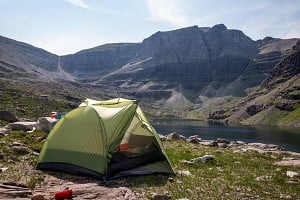
The Grid is a two-person semi-geodesic tent recommended as 3/4 season tent in the UK. Marmot designed the Grid specifically for UK/European weather conditions I asked Martin Panton at Marmot about what features they included to cope with our weather here in the UK and mainland Europe.
The Grid is one of nine different styles of tent currently in our range specifically designed to meet the demanding weather conditions found in the UK and Europe. If you have ever camped in North Wales, Scotland or the Lake District then you will have undoubtedly experienced high winds, horizontal rain and boggy campsites. All these weather factors have a huge affect on the camping experience and give reason for the development of the Grid tent.
So what have we done to adapt the Grid to these typical UK weather conditions?
1. The flysheet sits lower to the floor – This helps stabilise the tent in high winds by limiting the amount of wind getting underneath the flysheet. This also stops the flysheet from being pulled off during high winds (the inside out umbrella affect).
2. The inner tent groundsheet sits higher off the floor – Heavy rain causes water droplets to bounce off the floor. This bouncing affect allows water to get underneath the flysheet and onto the inner tent. Our low sitting flysheet and high sided ground sheet eliminate this situation from soaking the inner tent. This also helps against long wet grass sitting against the inner tent and allow water in.
3. Outer first pitching (storm pitching) – The inner is attached to the outer tent and pole sleeves are situated on the outside of the tent. This allows the tent to be erected in the rain without exposing the inner to moisture. This system also helps speed up the pitching process (average tent pitch time is 4 minutes).
4. Increased waterproof coating – Both the flysheet and groundsheet have thicker coating of silicon applied to give a higher resistance to water trying to get through the fabric under the pressure of wind or body weight on top of the groundsheet on saturated ground (Flysheet = 3500mm*, Groundsheet = 8000m* hydrostatic head pressure*).
(*hydrostatic head - the pressure at a given point measured in terms of the vertical height of a column of liquid needed to produce the same pressure)
Another question Martin. Your average 3/4 season, two-person tent for UK mountain and valley use from premier brands like Marmot costs between £200 and £350. You can get a two-person 3 season tent for £80, The Quecha T2 Ultralight from Decathalon. Why not buy the cheaper tent?
Good Question!
It simply comes down to matching the right choice of tent to the correct environment and conditions you are likely to find yourself in. Lower priced tents offer excellent value for money for those wanting to experiencing camping. The materials used in lower priced tents will normally not withstand consistent exposure to high wind winds and pouring rain. Fibreglass poles used in lower priced tents have a poor ability to withstand high pressure loads which can be caused by gusts of wind. In this situation pole frequently shatter and usually rip the flysheet wide open (camping trip over). The waterproof coating applied to the fly and ground sheet of lower priced tents are also much thinner on cheaper tents. This gives a much lower resistant to water pressure and could mean your tent leaks after prolonged exposure to rain in high winds. A thinner coating will reduce the lifespan of your tent and once the coating has worn off your tent it will then simply leak.
OK, before we get to the reviews. What makes the Marmot Grid special? Give us your best pitch, if you will excuse the pun.
Time for some bragging. Marmot's Grid tent is the best selling European tent styles EVER, it has won Trail Magazines 'Best in test award ' TWICE in the last three years and been Country Walker magazines favourite lightweight tent in test (2009 June issue).
Next time you walk into an outdoor shop looking to buy a tent ask the assistant for a tent designed specifically for UK weather conditions. You will no doubt be given a wide choice of tents to choose from and a large proportion of these tents will be US specific designed tents. These tents - including some of Marmot US styles - have lots of mesh in the inner tent (cold when windy!), low sitting bath tub groundsheets and thinner waterproof coatings on fly and ground sheet.
These tents are perfectly fine for lightweight backpacking or less frequent exposure to wet and windy conditions but the Grid offers much better year round weather protection regardless of the camping situation. This equates to better piece of mind and comfort inside your tent regardless of how bad the weather is outside.
OK, £280. Do we get any guarantee with that?
We warrant every product we make to be free of manufacturer defects. Should you have a warranty issue, return the item to us. We will repair it if possible or replace all valid warranty items.
But I presume if it is normal wear and tear people have to deal with those issues themselves.
If you accidently damage your tent then help is at hand. All Grid tents come with a small field repair kit which allow small repairs to be made in the field if anything goes wrong. This kit is pretty basic but would be enough to fix most minor issues until you get back to civilisation. A number of good companies offer repairs for outdoor clothing and equipment. Marmot works closely with Lancashire Sport Repairs in Burnley (website), and always recommends repairing rather than replacing.

Marmot Grid Review by Danny McShane at Facewest.com who stock the Marmot Grid.
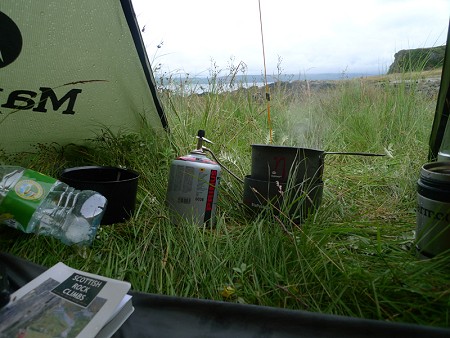
I bought the Marmot Grid 2 after quite a bit of researching, and a close look at some of the competition.
I was looking for a tough, roomy tent for solo winter high camping in Scotland. I agonised for ages over weight and features, and arrived at the Grid 2.
It's not ideal, but it's very close. It feels roomy and sturdy. Three pole semi-geodesics are confidence inspiring, and the trade off is probably weight (2.7kg).
My ideal tent would have snow valences and this doesn't, but the groundsheet “bathtub” extends up a good 6 inches from the floor. The 8000mm groundsheet material seems light, but not compared to an ultralight material. I usually put my karrimat under the flysheet in snow – but I'd be tempted to get a footprint or use an extra poncho/groundsheet for summer use just for physical protection.
Porch room is good, and the inner tent can easily be detached from the fly (it attaches by toggles) and folded back to give any size porch you want until it's time to get into the sleeping bag. The inner and fly doors are both cleverly thought out. Four zip pulls on the fly door (an inverted 'U') mean you can open either side and from the top or bottom. Either 'quarter panel' or the front panel or 'everything' can be used for entry to suit the weather. The inner oval panel door has double zip pulls and a zip open midge net panel that is the full size of the door (two more zip pulls). Ventilation is good.
There are small permanent mesh panels high up at the rear (foot end) of the inner tent and low down at the front end on either side (these would be in front of your face if you lie on your side - perfect). These are not covered however, so will reduce the temperature a bit, but really help with condensation. The flysheet has corresponding vents that have little props (they feel like a piece of plastic tube inside a nylon cover) that are sewn on at one end and Velcro in place on the other when you need them. Add the ease with which doors can be left partly open and you can have a breeze inside if you want to and still be midge free.
There are loops and small pockets in the inner, and a zipped slot at the foot for reaching through to adjust the rear flysheet vent from the inside. The tent comes with a full compliment of pegs – 15cm aluminium stamped sheet type, and a repair kit with a tube joint, swatches of all the materials in the tent and some buckles and clips. The pegging and guy points on the tent well designed and reinforced. The main peg loops are oversized tape loops to work with pegs, stakes, poles, ice axes, skis etc) and the tensioners have sliding buckle adjusters. There are guy points around the fly that probably won't be needed other than in the worst weather. That said, the two mid-point side guys -in the largest area of the side of the fly -probably will be needed to keep the fly away from the inner as they can be attracted together by static when it's dry enough.
Packed size is quite large, but the stuff sac is oversized which hugely eases packing up in less than ideal conditions.
All-in-one pitching is an option (and was a primary concern for me). Three-pole tents will always be fiddlier than two -pole tunnels to pitch as you have to juggle the pole tensions a bit to make all the curves achievable. The Marmot's design is unusual in that the pole sleeves have a closed pocket at one end (heavily reinforced with woven nylon) and the poles have one corresponding rounded end for pushing through. This eases threading the poles, but it's still an operation that takes a bit of practice and you don't want to be doing it for the first time in a stiff breeze. That said, the Marmot poles are easier to thread than a Force Ten Nitro I tried. Securely pegging the upwind end of the whole shooting match with two or three pegs before threading the poles is the best tip I can give, and the next best is to keep the other poles well out of tramping distance (or assemble them one at a time as you are about to use them -colour coding enables this). Otherwise the ground around the tent will seem covered in poles...
The external pole sleeve design does make an area that can catch and hold snow, but at least the tent's strong enough to hold it and once it's there it helps streamlining against the wind.
For me this is a well thought out tent for 4 to 5 seasons in the UK that balances strength, room, price and weight. It doesn't win any in single category, but it's a good all round solution.
Summing up: GOOD: Roomy for one, inner length, sit-up height, door design, great ventilation, pegging points, rigidity, all-in-one pitching, oversize stuff sac.
Compromises: 2.7kg, packed size, three poles, single end entry. Could be cramped for two with winter gear (but that's what three man tents are for).
Reference: Facewest.com

Marmot Grid Review by David Bell at www.buachaille.com who do price comparisons and gear reviews
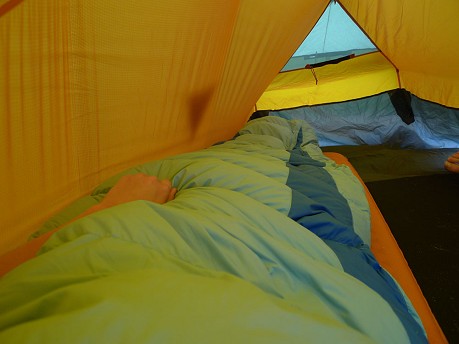
General comments: I've owned this tent for just under a year now, and am overall very pleased with it. It's not going to appeal to people who are looking for a lightweight tent as it weights near on 2.7 kg, but for me the heavier weight is well worth the increase in durability and robustness I expect from it.
In this respect, the semi-geodesic design is very strong and resists wind very well. Moreover, the build quality is superb. Pitching is relatively fast and certainly easy with three separate poles which slide through sleeves on the outside of the fly. The front pole is bent in the middle which gives good headroom at the front of the tent and is also black, so it can be easily distinguished from the other two (which are interchangeable and copper coloured).
The porch is reasonably spacious, and just has enough room for two medium sized rucksacks and a stove to brew up and cook a meal. Moreover, there are several options for opening the porch so you can always get protection from the wind whilst cooking.
The inner is plenty big enough for two people and is a nice light colour which gives the tent a bright, pleasant feel as opposed to being gloomy. There is a midge net and good vents (four in total) which help to reduce the build up of condensation. However, my sleeping bag does seem to get a bit wet at the bottom, and as this is directly beneath the tent's rear vent this makes me wonder if condensation drips through it onto my bag.
The only other downside is an annoying guyline which extends right down the front of porch, though I can't see why it would be necessary to use it in all but the strongest of winds.
Pros: Stable design, build quality, plenty big enough for two, excellent variety of ways to open the porch, feels bright and roomy inside.
Cons: Weight will put some people off, dodgy rear vent perhaps, front guyline.
Reference: www.buachaille.com
Pitching The Marmot Grid
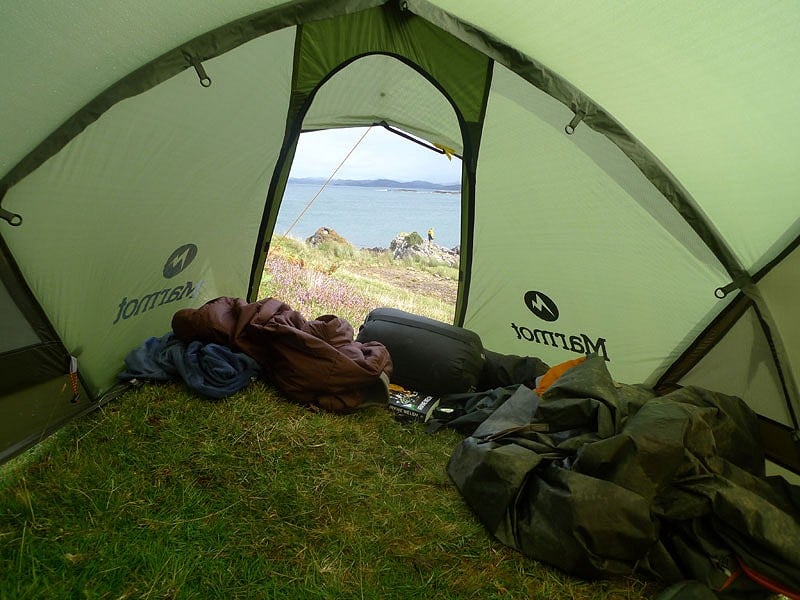
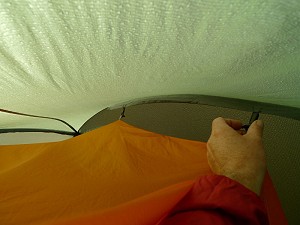
Pitching a tent can be confusing to some people, I must admit I sometimes struggle with unfamiliar tents. So we did a little test. The video below shows Hannah James-Louwerse attempting to pitch the Marmot Grid 2 tent. She has never seen this tent before the beginning of the video, she hasn't read the instructions and she has only ever pitched one other tent in her life!
Hannah James-Louwerse pitching the Marmot Grid, an Onsight Flash
Hannah took ten minutes, after doing it once you can achieve a sub 5 minute pitch easily.
You pitch the Marmot Grid outer fly sheet first. In fact there are two methods. As Hannah did above where the fly and the inner are clipped together and you simply slide the three poles into the sleeve and peg out. The tent is pitched fully.
The other method is to have the fly and the inner unclipped and separate. You pitch the fly first by inserting the poles and peg out, then get inside the fly and clip the inner to the fly.
Similary when comes time to strike camp, especially if it's raining, you can detach the inner first, then the fly.
My Opinion
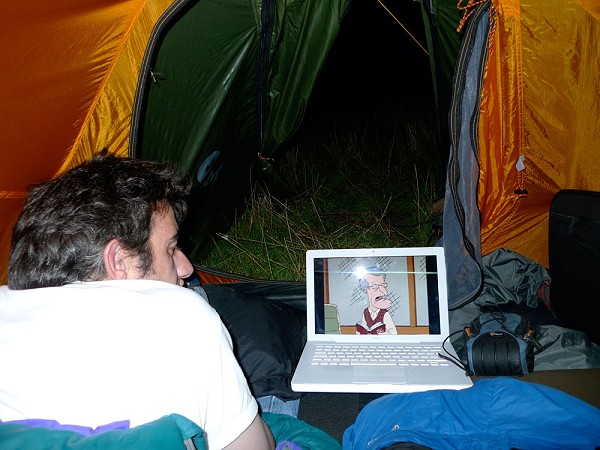
On a trip to Reith last year we set off late and had to camp in a field north of Stirling. It was raining hard and field was waterlogged. We quickly pitched the Grid and settled down, after watching Family Guy, to a nights sleep. In the morning we were dry, despite a mini river running under the tent, we did have sleeping mats.
The floor fabric of the Grid is a tough 70D Nylon commonly used for tent ground sheets. The material is coated with polyurethane to give water proofness. This combination has a hydrostatic head (huh) of 8000 mm. Hydrostatic head is measured by exerting water pressure against the fabric using a tube filled with water. At the point water passes through the fabric the hh is measured. The higher the hh and the more waterproofed the fabric. A hh of 8000 mm is comparatively high for ground sheet material, often only found on serious high altitude mountain tents.
Word of warning however, always a good idea, when you can to use a tent footprint to protect the ground sheet. The Marmot Grid footprint costs £32. Even the strongest fabric is susceptible to puncturing by sharp stones, or pine needles. Another quick note, when we got back from Reith, it did rain a lot, make sure you hang your tent to dry thoroughly to prevent irreversible mildew and rot.
The semi-geodesic design, three DAC NSL Poles and three nodes - a node is the point where the tents poles cross - gives the Grid a low profile and great stability in high winds, which we tested on the coast of Scotland, it was bombproof.
In my opinion the Gid is as simple to pitch as a tunnel tent (see video). The front pole has a small square profile, like an elbow and this increases the height of the front of the tent - you get 1m of clearance which combined with the spacious porch (vestibule) made it very comfortable to cook/brew up and get changed on wet mornings on Arran. The insect net was appreciated too - just remember to use it.
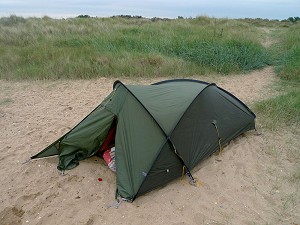
Backpacking: Some have said the Grid is a tad heavy for hiking and camping, and yes there are many lighter tents available, although I'm sure Ray Jardine (website), the original lightweight long distance walker and camper would have words to say about many lightweight tents one go his weighs just over 300 g. I went on a short backpacking trip along the Norfolk coast (don't ask!) and we split the 2.7kg Grid which comes in around 1.3 kg each, 300g heavier than a bag of sugar. If you use compression sacks the volume can reduced considerably.
The only conditions I haven't tested the Grid is winter camping on snow.
Apart from that I can't add any more than Danny and David above. This is a great tent, well-constructed, it protects you from the British weather and insects, and in my opinion is good value for money, I've no doubt it is going to last.
If you need a tent for occasional car camping on climbing trips you may as well as get something bigger, and cheaper then a technical tent, there's lots available out there.
If you do a lot of camping, do some backpacking, want a tent for high mountain camps it's worth the investing in a tent like the Marmot Grid.
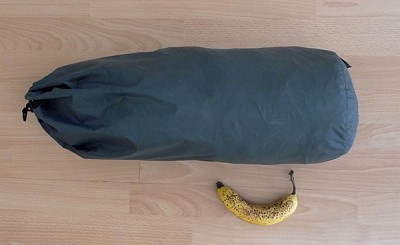
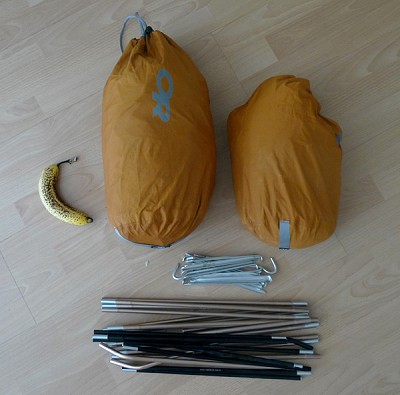
Marmot Grid 2P
BACK TO NATURE: Similar Tents To The Marmot Grid
If you are a travelling climber it makes sense to camp, especially in these uncertain economic times where every penny counts. OK those who travel a lot might opt for a rigged out van or if you are really plush an American-style RV or motor home; those really plush may opt for a night in a hotel of course. But if you are organised camping is not only fun, it's great to sleep under the stars, but is cheap, gives you greater flexibility and autonomy and can be quite luxurious.
If you are looking for a 3/4 season all-purpose two man tent, here's a list of tents you might like to check out that are similar to the Marmot Grid and at similar price point
The North Face Tadpole
2.13kg
uk.thenorthface.com
£ 289.00
Mountain Equipment Dragonfly 2XT
2.72kg
www.mountain-equipment.co.uk
£375.00
Terra Nova Superlite Voyager
2.27kg
www.terra-nova.co.uk
£370.00
Mountain Hardwear Viperine 2
2.27kg
www.mountainhardwear.com
£249.00
Vango Typhoon 200
3.75kg
www.vango.co.uk/
£200.00
Lightwave G2 Ulta
2.32kg
www.lightwave.uk.com
£475.00
Nemo Losi 2P Tent
2.5kg
www.nemoequipment.com
£299.00
Black Diamond Oasis Doublelight Tent
2.8kg
www.blackdiamondequipment.com
£259.00
Fly fabric 30d Nylon R/S Silicon/PU, 3500 mm (fully taped)
Floor fabric 70D Nylon (210T), PU, 8000 mm, (fully taped)
Package Weight 2,7 kg
Floor area 120/85 x 225 x 100 cm
Poles DAC Featherlite NSL ø 9.9
Sizes: 120 x 85 + 230 x 105 cm
Features
Roomy 2P Semi Geodesic Construction | Fast Storm Pitch | Front Vestibule | Weather Protected Inner Door | Front / Side adjustable Air Flow Vents | Bathtub Groundsheet | Optional Footprint | Bare Bone Set Up | DAC NSL Poles | Knee Pole System | Adjustable Ski Loop | Lightweight Nylon Fabric
Price: £280
Stockists: UK stockists of this productCotswold Outdoor: www.cotswoldoutdoor.com (Cotswold's website also has a video of the tent being erected)
Facewest: www.facewest.co.uk
Ellis Brigham's: www.ellis-brigham.com
The Outdoor Warehouse: www.outdoorwarehouse.co.uk
The Great Outdoors: www.greatoutdoors.ie
The Outdoor Shop: www.theoutdoorshop.com



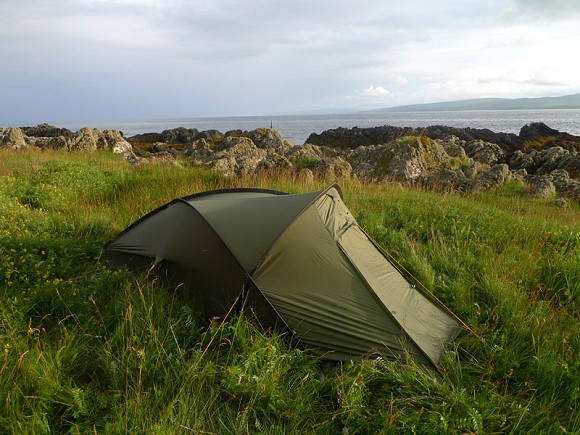
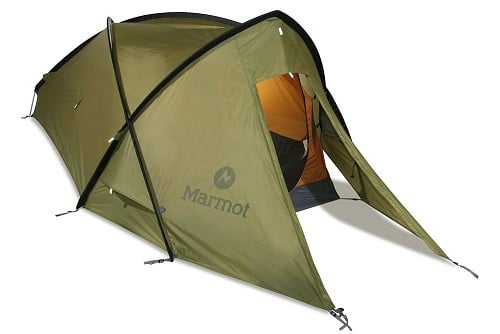
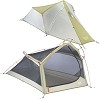
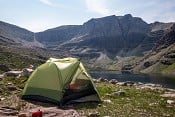
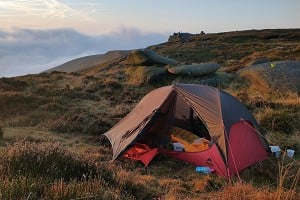
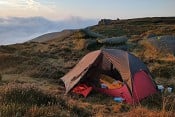
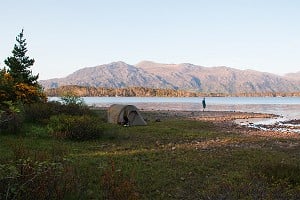
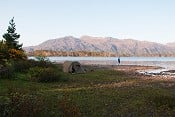
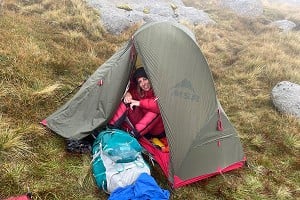
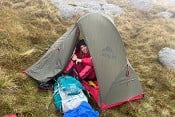
Comments